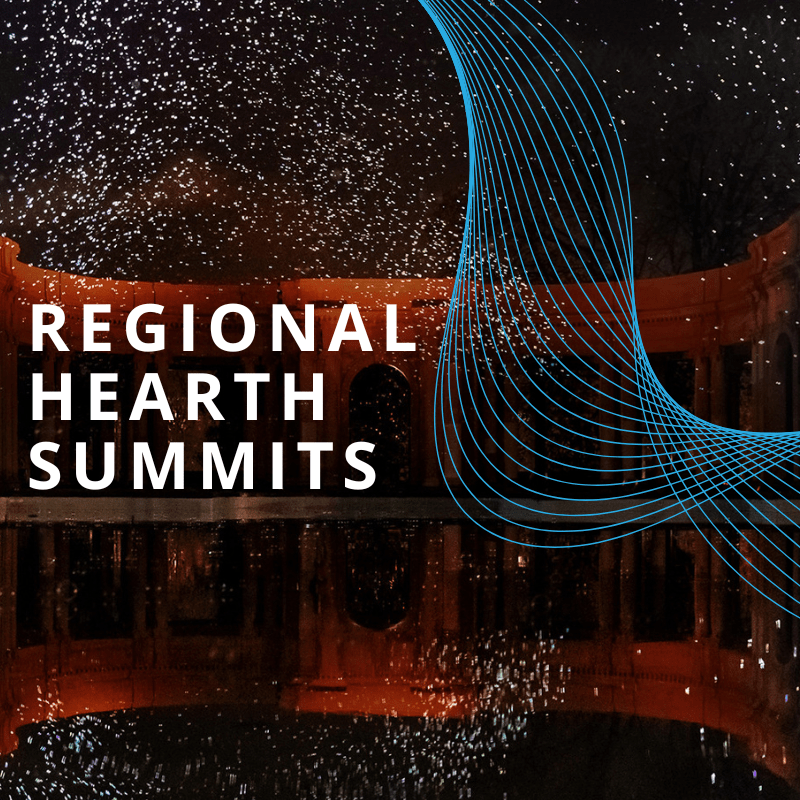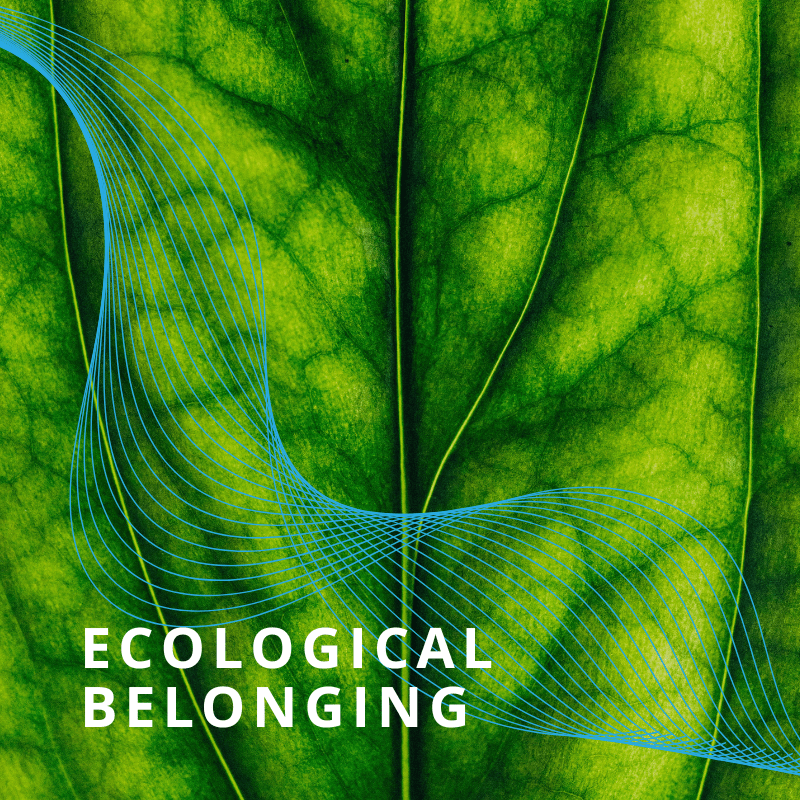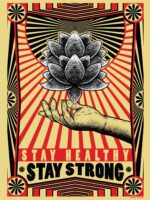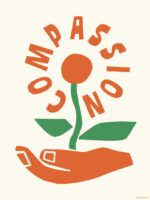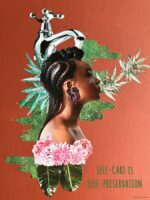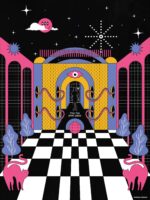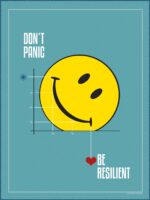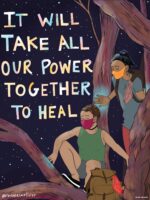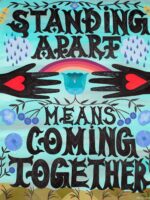Wellbeing Wisdom From India: An Interview with Dr. Mala Kapadia on Intergenerational Trauma and Ecological Belonging Wellbeing Wisdom From India: An Interview with Dr. Mala Kapadia on Intergenerational Trauma and Ecological Belonging
A CONVERSATION WITH:
Dr. Mala Kapadia
Director, Anaadi Centre for Indigenous Knowledge Systems, Anaadi Foundation
🌍 Tamil Nadu, India
What can traditional Indian Knowledge Systems teach the world about wellbeing?
Dr. Mala Kapadia, director of the Anaadi Centre for Indigenous Knowledge Systems at the Anaadi Foundation, shares knowledge and practices from the Indian sciences of Ayurveda, Yoga, Aesthetics, and Poetry, around Ecological Belonging and intergenerational trauma.
Watch the full video for her teachings, or read the highlights below.
“In India, I realized that the ideal could be that India becomes the voice for humanity — where you see the vibrancy of people practicing Ayurveda, practicing Yoga, living their civilizational, cultural values, which is slowly happening post-pandemic. It is slowly happening.”
WHAT ARE THE SCIENCES OF AYURVEDA AND YOGA AND HOW DO THEY RELATE TO WELLBEING?
Ayurveda, as they describe it, is a manual of life skills. It’s not just a medicinal system. It’s Veda- knowledge of ayu. Ayu is life. Ayurveda actually describes Life, and the beauty of Ayurveda is that it is for everyone. It’s not only for Indian people. It’s not for the people from a certain region, but the Sages talked about humanity at large. They say that our life has purpose and meaningfulness and to achieve that, there are paths, right?
The path begins with dharma, a Sanskrit word coming from the etymology Dharayati Iti Dharma. Meaning, anything that sustains you, holds you together, is dharma. I feel it’s a beautiful way to look at our life. It’s only psychology that has taken more than 200 years to reach positive psychology where Martin Seligman and others are talking about meaningfulness. And here there are sages many, many millennia ago who wrote about how life has to be meaningful for us to be healthy and happy. They describe life as Hita, beneficial to self and others, because they always saw life as a continuum: we and the Cosmos, we and everyone else, are interconnected. And only when we are leading a life which is interconnected and integral, can we be happy. And happiness is, not the pursuit of happiness that we understand today in a modern language, but it’s all about the State of Being. With the wellbeing crises that we see today, I realize that Ayurveda beautifully connects the wellbeing of the planet and wellbeing of an individual.
With the wellbeing crises that we see today, I realize that Ayurveda beautifully connects the wellbeing of the planet and wellbeing of an individual.
WHAT DO AYURVEDA, YOGA AND OTHER INDIAN SCIENCES TELL US ABOUT NEUROSCIENCE, EMOTIONS, AND HEALING?
What Yoga, Ayurveda, and the science of Aesthetics are talking about is being rediscovered and not just rediscovered, it’s being validated scientifically by some modern theorists. Today a lot of scientists talk of neurotransmitters, et cetera, but they look at only the brain. If you revisit our biology or anatomy from a Yogic perspective, our physical body that can be seen and studied or x-rayed is one reality, but we are also energy sheets.
So we are still stuck learning biology and anatomy from a Newtonian or Cartesian perspective dividing body and mind. But what is mind? People are still struggling to understand it. While in Ayurveda and Yoga, the body-mind continuum is very beautifully described. We have seven chakras, the major chakras, and many minor chakras. And I’m glad today chakra, like mantra and dharma, is a word in Western vocabulary as well. These are what Georgetown University neuroscientist Candace Pert talks about nodal points of neurotransmitters. The neurotransmitters on those nodal points of the chakras are either blocked or they are open. So when they are blocked, naturally the energy flow is restricted and therefore the energy or Prana does not reach those organs which are connected with those nodal points. She was one of the, I think, first Western scientists to say that body and mind is a continuum.
HOW CAN THIS KNOWLEDGE HELP US WITH HEALING FROM TRAUMA?
So when I go back to Yoga and Ayurveda as ancient sciences as I said, “If we all are integrated, we all are connected, then my energy and the world’s energy is somewhere merging together, right?” Energy, we all know, cannot be created or destroyed. It needs to be transformed. So when we look at trauma, trauma is an energy block as I see it personally. If it’s a blocked energy, then which chakra is it impacting? Is it impacting your security? Is it impacting your relationships? Is it about your power or victimhood? Is it about your heart experiencing gratitude or is it about your heart experiencing a closed xenophobic existence where you switch on to a survivalistic mode? This is what scientifically people talk about trauma and the response to trauma as fight, flight, or freeze. But that fight, flight, freeze is not just limited to the brain. It travels all over the body. So, if my mind is in every cell of my body, then my trauma response is also coming from every cell in my body. It’s not only a cognitive skill.
This is where Yoga and Ayurveda come into play because they have a lot of practices which can help you dissolve these traumatic emotional imprints without wanting to bring them up to the brain, which is not able to cope.
And they can be dissolved with a lot of Ayurvedic treatments, Ayurvedic lifestyle guidance meditations and Yogic lifestyle. And when I say Yoga, it’s not just exercise or breathing exercises or physical postures. Patanjali’s Yoga Sutras, one of the oldest texts of Yoga talks of Yama and Niyama, which are the behavioural codes at the individual level and collective level. So unless we practice them, doing breathing exercises and doing postures will not give us results.
DO INDIAN SCIENCES TELL US HOW INTERGENERATIONAL TRAUMA AND ECOLOGICAL BELONGING ARE CONNECTED?
In all ancient indigenous cultures, I found one thing common is, apart from being connected with nature, they’re also connected with their ancestors. Our history, our ancestors, are living within us, not just genetically, but psychologically and spiritually. Ancestor healing is a major ritual in most of the indigenous cultures, including India. In India, we have birth charts. The moment you are born, depending on the time of the birth, a birth chart for every child is created. Most of the birth charts have a problem with ancestors. It’s called Pitru Dosha. Pitru are ancestors and Dosha is some problem. Now, obviously, we really don’t know what our ancestors were going through, right? Beyond a certain generation, we don’t even know our ancestors. And we don’t even know what their life was. We don’t even know what trauma they went through. But whatever their trauma, we have inherited it and the trauma of Mother Earth. That’s also an ancestral trauma. There are a lot of rituals connected with the five elements – the element of sky or ether or Akaash; the element of air or Vayu; Fire; Water; and Earth – because many ancient indigenous cultures believe that the entire universe and our body all are made up of these five elements.
WHAT IS AN EXAMPLE OF AN INDIAN PRACTICE ONE CAN DO TO WORK ON INDIVIDUAL AND COLLECTIVE HEALING?
One ritual we have is ending all the prayers with saying, “Shanti hi, Shanti hi, Shanti hi.” Shanti means peace. Why do all prayers end with saying peace three times? Just one time could have been enough. The three “peace” is invoking peace at three levels: one, individual, me and myself; two, collective, which is the community around me, society, Nature around me, my nation; and three, the global level and Universal level.
Today, when there are wars happening, when there is so much destruction happening, when there is so much human suffering, working on peace and giving it priority is very important. I realized that, unfortunately, most of the Western researchers define peace as an absence of war or conflict. Peace is not seen as a positive construct in itself, which is there in India. In Indian literature, in Indian philosophy, peace is a positive construct. Health is a positive construct. Health is not as opposed to disease and peace is not opposed to war or conflict. So, if peace is a construct in itself, how do you arrive at it? How do you actually start experiencing peace from within? And chanting mantras, chanting simple Om, is one way.
Why do all prayers end with saying peace three times? The three “peace” is invoking peace at three levels: one, individual; two, collective ; and three, the global level and universal level.
YOU’RE DESCRIBING HOW MODERN SCIENCES ARE “VALIDATING” TRADITIONAL SCIENCES. DOES THIS MEAN THEY ARE THE SAME?
We talk of ancient or indigenous wisdom at one level and modern at another. And a lot of people have this misconception that ancient is outdated and modern is more scientific, or modern is the complete know-how. Unfortunately – or fortunately – we realize that what is ancient is being rediscovered by many modern theorists. So we as humanity, we just have to take a U-turn and go back to our own cultural roots, civilizational roots. I realize that most of the indigenous cultures, they were connected and rooted in nNature. I’ve been to Hawai’i. I’ve met some of the Kahunas, the wisdom holders. And one of the Kahuna, I still remember, she held my hands and she said, “You are one of us.” I realized that she felt that and I felt that because of the Mother Earth. We could have lived in different lifetimes. We could have lived in different geographical locations, but ultimately, it’s all One.
I’ve been to Hawai’i. I’ve met some of the kahunas, the wisdom holders. And one of the Kahuna, I still remember, she held my hands and she said, “You are one of us.” I realized that she felt that and I felt that because of the Mother Earth.
IN FACING OUR 21ST CENTURY CHALLENGES, WHAT ROLE DO YOU THINK SPIRITUALITY AND THIS ANCIENT WISDOM CAN PLAY IN THE SOLUTIONS?
The industrial revolution has uprooted people from nature. Nature has become a resource to be used and exploited. People became a resource that needs to be used and exploited and we didn’t realize that we ourselves became this resource. This trauma needs to be addressed because today, corporates have to wake up to the spiritual aspect, which is not a philosophical aspect, it is a practical aspect. Most of the United Nations Sustainable Development Goals are far away from being met.
When we are spending so much money on sustainability goals, climate change, et cetera, what we don’t realize is, we just need to bring back that foundation of spirituality, Dharma, in everything we do. And the moment that foundation comes back, everything will fall into place. Right now, we have lost the bigger picture. We are all struggling with pieces of puzzles, trying to fit them here and there. But spirituality is like a bigger picture, and without looking at that bigger picture, we are not able to fit in those pieces of the puzzles.
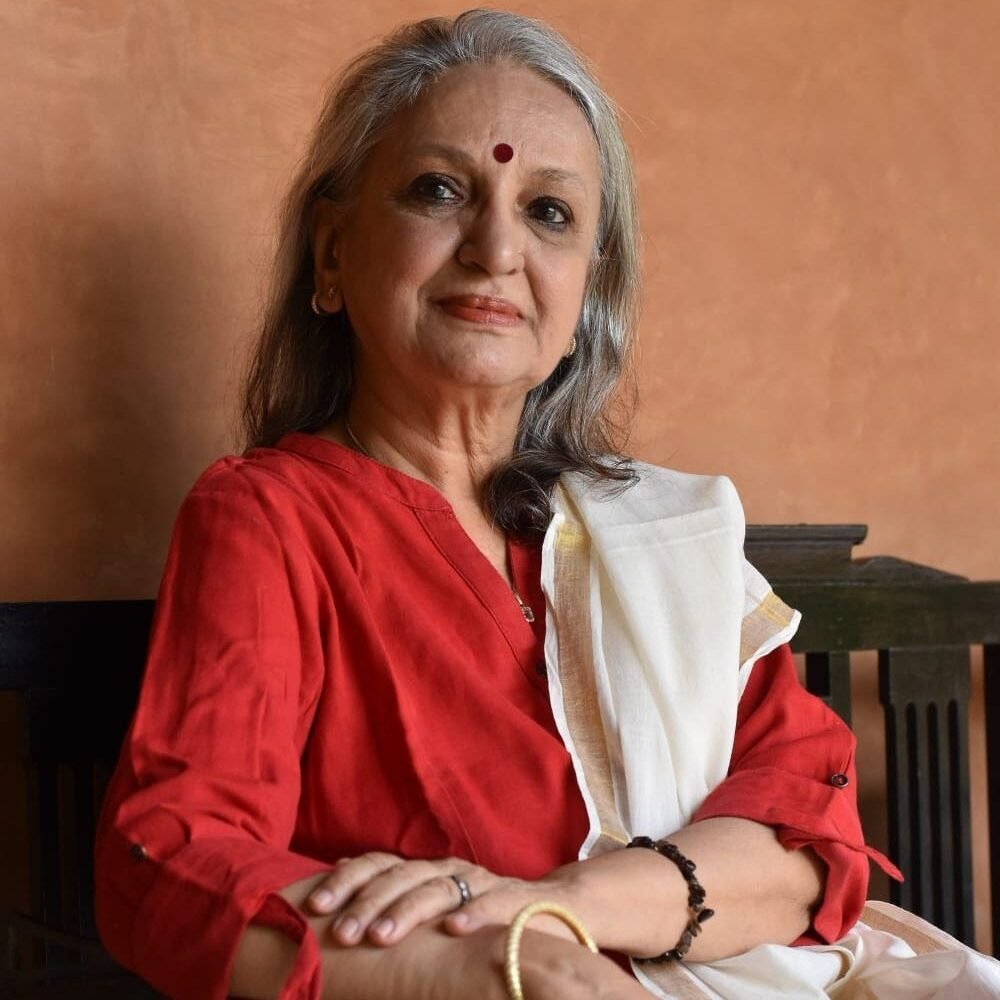
About Mala
Dr. Mala Kapadia is a highly accomplished scholar and practitioner with a distinguished career spanning research, education, journalism, human resources, and consulting. She is a passionate advocate for integrating ancient Indian wisdom with modern approaches to wellbeing, leadership, and organizational development. Dr. Kapadia is currently the Director of Centre for Indigenous Knowledge Systems, at the Anaadi Foundation and the Principal Investigator for a Ministry of Education (India) Indian Knowledge Systems Research Project on Wellbeing and Happiness based on Ayurveda. Mala is also a Guru participating in Grateful to Gurus, an initiative by Indica Academy, in which she inspire young minds in ancient wisdom. She is also a member of the Advisory Council of Centre for Indian Knowledge Systems at Chanakya University, Bengaluru, India.
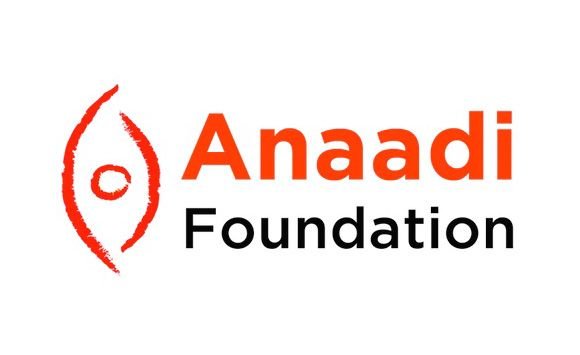
About the Anaadi Foundation
Anaadi Foundation is a spiritual organisation founded in 2015 and located near Palani in Tamil Nadu, India. With key focal areas on Education, Culture, Wellbeing and Sustainability, the Anaadi Foundation focuses on imparting Indian Knowledge Systems through various initiatives including Dharma Gurukulam, IKS-funded projects, publication of books, and training programs. The Anaadi Foundation provides various programs aimed at physical, emotional, and cognitive stability. These include the Mouna Sadhana program, which integrates asana, pranayama, dharana, dhyana, and Bhagavad Gita sessions. The foundation actively engages in sharing and preserving the depth of Indian culture, sciences, and values.
Want to know more about trauma and its impacts?
Watch the first virtual convening in our webinar series hosted by The Wellbeing Project and the Collective Change Lab. You can also visit our new hub for research and stories on intergenerational trauma. Together, we explore how we can move from trauma-informed to healing-centered ways of working for systemic change.
Discover the Wellbeing Movement in IndiaDiscover the Wellbeing Movement in India
Meet and hear stories from the changemakers championing the wellbeing movement in India.

Ecological Belonging Fellows
Exploring Ecological Belonging Together
Over 50 fellows from across four universities (Georgetown University, Centro Universitario Facens, University of Hawaii at Manoa, University of Ljubljana) have embarked on a two-year fellowship journey, exploring the concept of ecological belonging and the driving question at the heart of this work: how do we live? The students come from different academic backgrounds including: chemical engineering, medicine, law, environmental studies, anthropology, economics, and business.
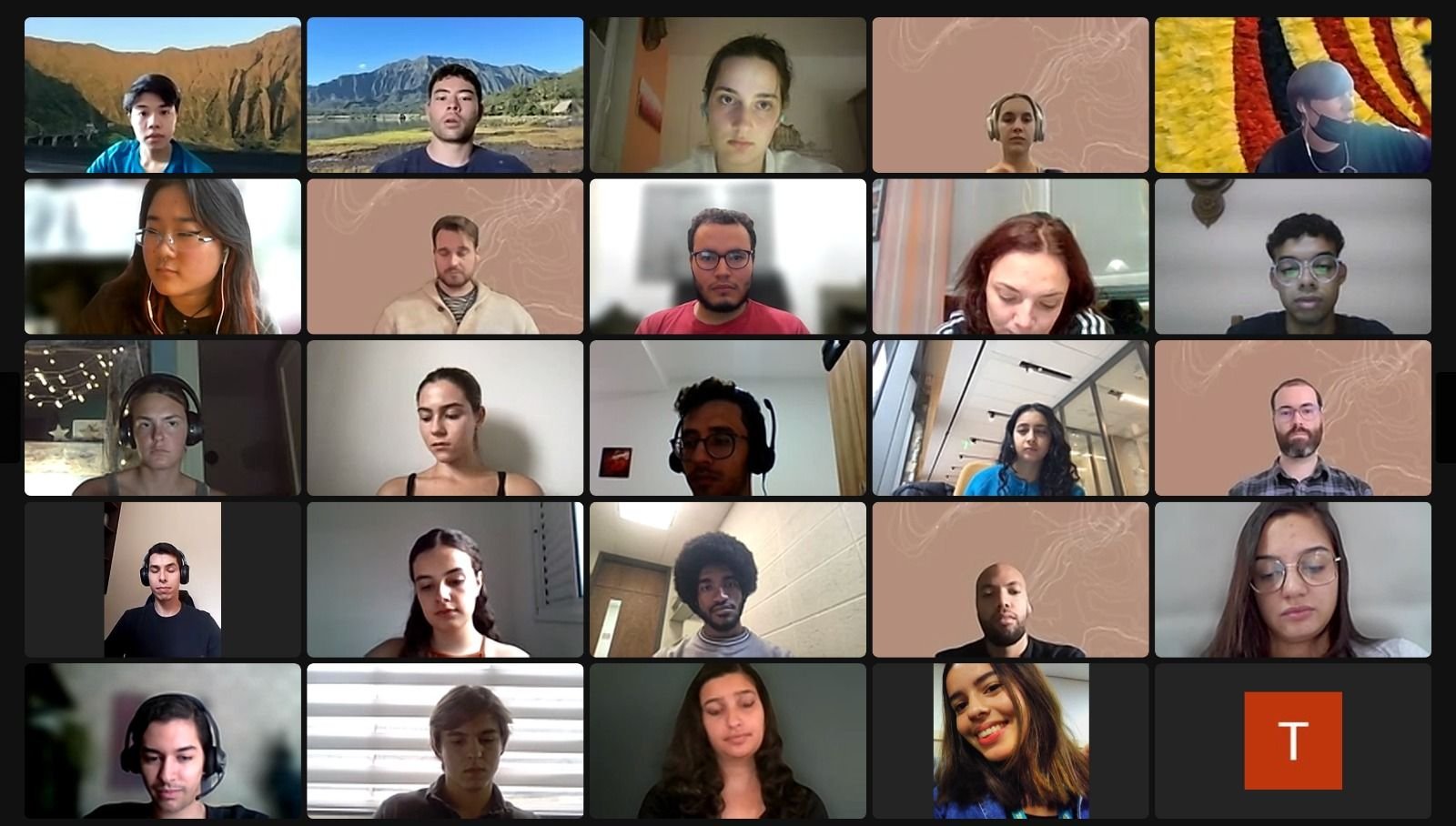

The Fellows are providing leadership over a two year cycle to our Ecological Belonging exploration. They are doing a program that includes:
- Modules that dive into topics that are becoming part of new curriculum
- Engaging a broader community at their University
- Attendance at the Global Wellbeing Summit in 2025
- A certificate from Georgetown

Remembering, Renewing, and ReweavingRemembering, Renewing, and Reweaving
Ecological Belonging x Regional Hearth Summits
With a name inspired by the fires around which humanity has gathered since the dawn of time, regional Hearth Summits are built on a profound appreciation for ritual, tradition, and culture. They epitomize a harmonious fusion of local traditions and global connectivity, fostering a profound discovery of cultural heritage and our intrinsic bond with nature. At the core of this exploration of Ecological Belonging: living in an ongoing interconnected relationship with ourselves, each other and our broader natural world.
These locally-led, globally-connected, and universally human events serve as vibrant hubs where communities converge to celebrate and preserve their unique customs. Through storytelling, workshops, and experiential learning, the Hearth Summits invite changemakers to a global dialogue rooted in the authenticity of local identities and a shared reverence for the natural world.
Across the regional Hearth Summits, discover how local communities are remembering their inherent bond with the world, reweaving ancient rituals into modern-day life, and reconnecting with the natural environment. Want to go deeper into the world of Ecological Belonging? Join our global movement.

RECONNECTING WITH NATURERECONNECTING WITH NATURE
“Nature is the source of all true knowledge.”
Leonardo Da Vinci
With many events hosted in the heart of local landscapes, changemakers immerse themselves in the raw beauty of their surroundings, allowing nature’s awesome wisdom to permeate every aspect of the Hearth Summit experience.
Nestled in the gardens of Tamarind Brasserie, Hearth Summit Nairobi offered changemakers a serene retreat into nature, with forests, flowers, and even new friends: cats, hares, tortoises, and monkeys regularly roamed through the space throughout the event.
Immersed in the magical landscape of the Omega Institute, changemakers at the first regional summit in North America were able to connect to each other and themselves, all in the awe-inspiring environment of the 250-acre campus.
Nestled on the banks of the Guarapiranga dam, The Wellbeing Summit São Paulo offered a pristine view of the Brazilian coast, including 200,000 m2 of preserved Atlantic forest, home to 290 native species that have been re-introduced to the environment, thanks to Clube de Campo’s conservation efforts.
A “Planting Manifestation” station let changemakers contribute to Bangalore Creative Circus‘ permaculture garden. The activity guided them through a meditation as they held their plants, touched the soil, watered the sapling, and planted seeds of dreams into the earth.
Nestled on the banks of the Guarapiranga dam, The Wellbeing Summit São Paulo offered a pristine view of the Brazilian coast, including 200,000 m2 of preserved Atlantic forest, home to 290 native species that have been re-introduced to the environment, thanks to Clube de Campo’s conservation efforts.
The permaculture garden at Bangalore Creative Circus offered participants a serene space to reflect on the Summit’s theme of Ecological Belonging, enjoying a full multi-sensory experience with the garden’s different landscapes and treasures.
ENTERING IN DIALOGUE WITH THE EARTHENTERING IN DIALOGUE WITH THE EARTH
“Nature is the source of all true knowledge.”
Leonardo Da Vinci
Ecological Belonging and planetary wellbeing were key themes at Hearth Summit Nairobi, hosted in the biodiverse Karen neighborhood. A diverse group of experts – Fridah Kiboori, Nyaguthii Chege, Constant Cap, and Kevin Juma – shared perspectives on contributors and inhibitors to ecological wellbeing in Kenya. Reflecting on the drastic environmental changes over the years in Kenya, they offered ideas for different solutions to promote conservation, regeneration, and healthy cities, focusing on common themes like justice, grassroots empowerment, equity, and financing.
In Bangalore, a diverse panel on Ecological Belonging brought three perspectives on social change in India and the importance of reconnecting with nature. Abhayraj Naik, Co-Founder of the Institute of Climate Action, discussed the profound spiritual dynamic of the human-nature relationship; Dr. Mala Kapadia, Director of the Anaadi Foundation Center for Indigenous Knowledge Systems, reflected on India’s unique cultural traditions and their roots in nature; and Naveen Vasudeva, Co-Founder of Ritambhara, presented the deep wisdom and hope one can find in Yoga.
INTERGENERATIONAL EDUCATION
SESSION AT HEARTH SUMMIT HIGHER ED
In México at the annual Wellbeing in Higher Education gathering, Papalii Dr. Tusi Avegalio, an Elder of the student-led Ecological Belonging fellowship, shares his wisdom and vision. He discusses the power of ancestral wisdom to meet contemporary challenges; how Pacific community values can guide innovation and entrepreneurship; and strategies to boost community wellbeing through education and research. Watch the session (in English).

INDIAN WISDOM AND CONSCIOUS LEADERSHIP
SESSION AT HEARTH SUMMIT HIGHER ED
In México at the annual Wellbeing in Higher Education gathering, Nilima Bhat, distinguished professor in gender and conscious leadership studies, introduced changemakers us to the concept of Shakti Leadership: a powerful fusion of ancient Indian wisdom and emerging knowledge. Learn about the essence of Shakti Leadership, which balances feminine and masculine energies, and the practices that can strengthen your leadership. Watch the session (in English).

REWEAVING RITUALSREWEAVING RITUALS
“Learning to touch deeply the jewels of our own tradition will allow us to understand and appreciate the values of other traditions, and this will benefit everyone.”
Thich Nhat Hanh
Bringing together people from all backgrounds, the regional Hearth Summits invite local communities to share their vibrant cultural heritage and wisdom. This celebration of diversity enriches us all, inviting cross-cultural, intergenerational dialogues and preservation of treasured indigenous ways of life.
YOGA AND CONSCIOUS HUMAN DEVELOPMENT
SESSION AT Hearth Summit São Paulo
In São Paulo, Marco Schultz, coordinator of Simply Yoga, shared a profound, transdisciplinary approach to human development, drawing on various traditions of India and other Eastern and Western cultures. This approach to self-awareness and self-knowledge encompasses the spiritual and integral aspect of the human condition. Watch the session (in Portuguese).
On the Philippine island of Siquijor, traditional healers have been practising spiritual forms of healing for generations. Their rituals are deeply connected to the immense biodiversity of the Philippines and the island itself — one of the most remotely populated within the nearly 8,000 islands in the Philippines, of which only about 2,000 are inhabited by humans. Today, these practices have become intertwined with Catholicism, the primary religion in the country, though traditional spirituality remains taboo at times. Hearth Summit Philippines, hosted in collaboration with the Siquijor Healers Association, invited Filipino changemakers to reconnect with Indigenous ways of knowing and their overall impact on wellbeing. Learn more about the Siquijor healers and a Philippine take on wellbeing.
In Brussels, Buddhist monk Bart Weetjens led the crowd in a chant of the ancient Shigu Siegan Mon, or the four great vows of the Boddhisatva. This sutra represents the ideal of all Buddhists: to liberate all beings by practising the ways of the Buddha. Watch the magical moment here of changemakers chanting alongside Bart, and practice it yourself:
Shujō muhen sei gan do: Living beings are limitless, I vow to to liberate them all / Bon-no mujin sei gan dan: Delusions are inexhaustible, I vow to understand them all / Ho mon muryō sei gan gaku: Gates of Truth are incalculable, I vow to count them all /Butsu do mujō sei gan jo: The way of awakening is unsurpassable, I vow to attain it

THE SIQUJOR HEALERS
AT HEARTH SUMMIT PHILIPPINES
On the Philippine island of Siquijor, traditional healers have been practising spiritual forms of healing for generations. Their rituals are deeply connected to the immense biodiversity of the Philippines and the island itself — one of the most remotely populated within the nearly 8,000 islands in the Philippines, of which only about 2,000 are inhabited by humans. Today, these practices have become intertwined with Catholicism, the primary religion in the country, though traditional spirituality remains taboo at times. In 2025, Hearth Summit Philippines will take place on the island, hosted in collaboration with the Siquijor Healers Association, as a way to connect Filipino changemakers with Indigenous ways of knowing and their overall impact on wellbeing. Learn more about the Siquijor healers and a Philippine take on wellbeing.
MORE STORIES FROM THE REGIONAL HEARTH SUMMITSMORE STORIES FROM THE REGIONAL HEARTH SUMMITS
About Ecological Belonging
Reigniting Rituals Through the Arts, the Universal Language of Wellbeing
In an exciting collaboration with Community Arts Network (CAN), we are excited to launch a global initiative around the arts to create a unique and magical vision, along with local communities, around the concept of Ecological Belonging. Passionate and dynamic individuals in Austria, Bangladesh, Brazil, Colombia, India, Japan, the Philippines, and Senegal have taken on the role of Ritual Alchemist. Through the arts, they will delve into a local ritual or practice and engage the community in a journey to renew it for today.
The Ritual Alchemists have been chosen and are embarking on their journey of Ecological Belonging! Meet them on the Ecological Belonging Hub.

THE BASSARI
AT HEARTH SUMMIT Thiès
Both editions of the regional summit in Thiès welcomed members from the Bassari country, led by Black Keme (Antoine Indega Boubane) — an Ambassador of Bassari Culture and the 2024 Ritual Alchemist — who guided participants on an artistic, intellectual, and experiential journey exploring the Bassari’s coming-of-age traditions. Want to delve deeper into Bassari traditions and craftsmanship? Watch this introductory video to their nature-based coming-of-age practices (in English and French).

SOUTH INDIAN MYTHOLOGY
AT HEARTH SUMMIT BANGALORE
In Bangalore, Ritual Alchemist Poornima Sukumar allowed changemakers to practice making south Indian kolams: intricate, symmetrical designs drawn with rice flour or chalk powder, traditionally at the entrance of homes. They are a daily ritual in many households, symbolizing welcome, prosperity, and harmony. The practice dates back thousands of years, blending art, spirituality, and science. In mythology, kolams are said to please Lakshmi, the goddess of wealth, and ward off negative energies. The use of rice flour also reflects an offering to small creatures like ants, embodying the principle of coexistence. Over time, kolams have evolved into a cultural art form while retaining their deep-rooted spiritual significance.
EXPLORE THE RECONNECTION TO THE EARTH FURTHEREXPLORE THE RECONNECTION TO THE EARTH FURTHER
Dive Into Ecological Belonging Stories From Around the World
How I’m Transforming My Social Change Approach With Wellbeing How I’m Transforming My Social Change Approach With Wellbeing
Stories from the Hearth
Guest post by:
Amos Leuka
Director, Living Culture and Climate Alliance (LCCA)
🌍 Loita Maasai community, Loita, Narok County, Kenya
Amos Leuka, director of the Living Culture and Climate Alliance (LCCA), from the Loita Maasai community in Loita, Narok County, Kenya, attended The Wellbeing Summit Dakar-Thiès in November 2023. Listen to his journey of learning, inner reflection, and motivation as he shares his reflections on the gathering.
The LCCA promotess culture and climate adaptations in Africa and in particular, Kenya. It enables indigenous communities to promote their bio-cultural rights and supports them to be economically and culturally resilient, capable of managing their land systems and biodiversity. By building this solid base, providing leadership, technical and facilitative support, and using Participatory Video, LCCA creates a space to connect all indigenous communities and enable them to gain influence on climate issues affecting them, maintain their languages and use indigenous knowledge systems to manage their lands, social change and shape their future.
EXPLORE THE REGIONAL SUMMITS FURTHEREXPLORE THE REGIONAL SUMMITS FURTHER
Dive Into Stories From Around the World
Discover the Wellbeing Movement in Africa Discover the Wellbeing Movement in Africa
Meet and hear stories from the changemakers championing the wellbeing movement in Africa.
Cultivating a Thriving Inner Landscape Where Our Potential Can Bloom: 7 Learnings on How Mental Health Helps Achieve Social Change and PeacebuildingCultivating a Thriving Inner Landscape Where Our Potential Can Bloom: 7 Learnings on How Mental Health Helps Achieve Social Change and Peacebuilding
Growing up in Colombia, a country with an armed conflict, filled with bombings, massacres, and displacement, I always felt the need to heal our wounds of violence and work towards the construction of peace. Fundación Mi Sangre, co-founded with songwriter and singer Juanes, has been my primary vehicle for pursuing this purpose. Since 2006, Mi Sangre has played a pivotal role in fostering systemic cultural change in Colombia by involving youth and the actors surrounding them as key contributors to personal, community, and systemic transformation. This model equips participants with life, leadership, and entrepreneurial skills, empowering them to co-create positive changes in their communities, including solutions towards peace.
Our work encompasses a multifaceted vision of leadership, emphasizing the development of both individual and collective skills. It involves nurturing awareness, empathy, critical thinking, and curiosity while fostering collaboration. We address the challenges young people face due to living in impoverished and violent environments, providing comprehensive mental health support as a valuable resource for personal and collective transformation. With this emphasis on inner work, mental health, and wellbeing, we have seen positive results not only in our participants’ lives but in the systems all around us.
From more than 15 years of service to young people in Colombia, here are some of the lessons from our journey that have now become integral to our work.
1. We can support the individual through the collective.
In dealing with trauma and other mental health challenges, some specific cases require individual psychosocial support. However, our organization and country lack the resources to provide it individually at scale. Therefore, we have integrated mental health skills into leadership programs, to offer support in a collective setting while integrating a preventive approach. These programs blend self-discovery and introspection, with safe spaces, fostering social connections and a sense of belonging. The mental health dimension of our leadership programs holds a special place in the hearts of our participants. From our retreats, I recall with emotion their warm hugs, the tears of healing they shed, and the laughter that set their spirits free, all within the safe space we helped create for them.
2. Holistic wellbeing – connecting mind, heart, body, and spirit – is essential.
Our programs prioritize a holistic approach encompassing the mind, heart, body, and spirit. Engaging the mind fosters critical thinking, self-awareness, and informed decision-making. Emotional aspects, represented by the heart, nurture empathy and meaningful relationships. Physical well-being, supported by the body, ensures energy and vitality, offering valuable wisdom through a strong mind-body connection. Nurturing the spirit, which encompasses purpose and resilience, provides inner strength to face challenges. Collectively, these dimensions empower individuals to lead authentically, while achieving significant change. Our young participants have successfully created more than 1,800 change initiatives, achieving profound systemic transformations in areas such as violence prevention, reconciliation, gender equity, migrants’ inclusion, and prevention of forced recruitment to armed groups.
3. The creative arts and nature are our biggest allies.
Creative arts and nature are central to our programs. We offer creative outlets like painting, music, and writing to serve as therapeutic outlets, hellping to alleviate stress, anxiety, and depression. Art encourages mindfulness, fostering social connections and deep interactions. Simultaneously, nature provides purpose and tranquility and teaches the vital concepts of oneness and interconnection. Whether it’s a simple walk in the park, incorporating plants, or outdoor experiences in natural settings, these holistic approaches significantly enhance our program’s effectiveness. My heart fills with gratitude when I remember a participant who shared that she had discovered the wisest counselor in nature and had never received such profound guidance from anyone else.

Credit: Fundación Mi Sangre/Alejandro Bonnells

Credit: Fundación Mi Sangre/Alejandro Bonnells
“My heart fills with gratitude when I remember a participant who shared that she had discovered the wisest counselor in nature and had never received such profound guidance from anyone else.”
4. Mental health and wellbeing have to be cultivated.
From our community engagement, it is clear to us that mental health and wellbeing are not static conditions; they are cultivated over time through a combination of self-awareness, self-care, and positive life choices. To help our communities make these choices, we have developed several strategies, including an open-source library with tools and resources, along with trainer approaches and curriculums for parents and educators, on how to develop 17 different holistic leadership skills. To our surprise, this library, originally created for our team, has more than 2,500 visitors per month, demonstrating its regular use. We also don’t limit our mental health support to our participants: since the pandemic, our full team holds weekly online meetings to share various practices, encouraging us to lead by example and embody the change we want to be in our communities.
5. We must shift paradigms around mental health.
Transforming mental health paradigms is a crucial piece to this puzzle, given historical stigma that discourages those who are struggling from seeking support. To help change this dynamic, we have launched grassroots and national campaigns at Mi Sangre to normalize mental health discussions, emphasizing the importance of open, empathetic, and non-judgmental conversations. Recognizing that change starts at the individual and community levels, we are committed to creating tailored approaches to mental health, considering differences in ethnicity, gender, and age while incorporating local wisdom. We also seek to expand the dialogue on mental health to include wider audiences: inspired by the Wellbeing Summit for Social Change in Bilbao, we co-created the Wellbeing Summit Bogotá in September 2023. Mental health was a central topic at this event, which convened changemakers from the social change, business, academic, and public sectors. We aspire to extend this initiative to other Latin American cities, further advancing this crucial agenda for mental health.


An example of posters co-designed with local communities, written in Nasa Yuwe, the language indigenous communities of Toribio, Norte del Cauca, Colombia, with an invitation to reach out to mental health support services. Literal translation: “Weaving the good life. Mental health is harmony, source of inspiration and wisdom”. Credit: Fundación Mi Sangre/Alejandro Bonnells
6. Our personal journeys influence our professional work
Leading Mi Sangre has been a profoundly personal journey.My pursuit of inner growth and wellbeing commenced 18 years ago after facing burnout during my first venture. However, this journey evolved recently when I developed a deeper understanding of trauma’s impact on my work, through participation in the Inner Development Program by The Wellbeing Project. In a retreat with fellow change agents, I was transported back to a poignant childhood memory. I overheard the tragic fate of our neighbors, the parents of children my age who were kidnapped and brutally murdered. The re-emergence of this memory unleashed profound emotions, revealing the lasting impact it had on me. This experience unveiled the roots of certain unhealthy patterns in my entrepreneurial drive – a fear of losing what I cherish, an unconscious drive to do everything to survive and protect my loved ones, and a limiting belief that I must accomplish everything now because tomorrow is uncertain. I have undergone profound transformations as a result. When leaders embark on deep explorations of their inner selves, a much deeper layer of meaning emerges about who we are, what we do, how we pursue it, and, more importantly, how we want to pursue it. I have witnessed numerous stories of leaders similarly elevating their modes of operation (and impact!) by embarking on journeys of inner work.
7. Inner work can help heal systems.
In the pursuit of positive social change and lasting peace, inner work stands as a pivotal force that transcends individual growth to mend the very systems that have been fractured by violence and turmoil. The power of inner work is not confined to self-discovery and personal development; it extends to our collective consciousness and societal structures. Mi Sangre’s work involves weaving ecosystems, bringing together a wide array of participants from the public, private, and third sectors – sometimes even including former enemies and victims – to co-create solutions. Through our methodologies, we have witnessed the potential to transcend differences, hate, and fear in order to act collectively towards peace. By delving into the depths of our inner selves, we unearth the empathy, resilience, and wisdom required to reshape these systems.
“By delving into the depths of our inner selves, we unearth the empathy, resilience, and wisdom required to reshape these systems.”
Both through my work and personal experience, I’ve learned to embrace pain and struggles as inherent aspects of life. However, I’ve also seen the potential for leading a life filled with profound meaning, even in the face of persistent challenges. Equipping leaders with the skills to address trauma, support their mental health, and enable wellbeing is essential. In doing so, we are able to help them cultivate resilience, enabling them to reach their highest human potential, foster healthy relationships, and serve life with freedom and joy.
Looking back at the dream Juares and I had 16 years ago – working towards peace – I am convinced that including inner work in our systemic approach has been pivotal in catalyzing extraordinary leadership. Without it, we may have never been able to advance the reconstruction of our social fabric, influence decision-makers, and help heal systems that impact over 2 million people who have undergone profound transformations toward peace-building and social change. I invite you to explore how mental health, healing, and inner work may transform your work in social change – with a thriving inner landscape, there’s no limit for our how our potential can bloom.
About the authorAbout the author

Meet Catalina Cock Duque
Catalina Cock Duque, a seasoned catalyst for systemic change with over 25 years of experience, is a passionate leader in sustainable development, peace-building, and social impact. Distinguished as a Young Global Leader by the World Economic Forum and recognized by Silla Vacía in Colombia, she co-founded Fundación Mi Sangre, impacting over 2 million people in Colombia. As a Co-Founder of Oro Verde and the Alliance for Responsible Mining, Catalina played a pivotal role in establishing the first global certification for artisanal gold mining, expanding its reach to over 10 countries. She holds a BA from the University of Maryland and a Master’s from the London School of Economics, complemented by executive courses in leadership and innovation from top institutions worldwide.
Hear from Catalina's experience on taking part of The Wellbeing Summit Bogotá: Hear from Catalina's experience on taking part of The Wellbeing Summit Bogotá:
Global Summit on Dance Movement Therapy for Change – Reflections Global Summit on Dance Movement Therapy for Change – Reflections

By: Anubha Agarwal , Research & Learning Manager at The Wellbeing Project
Date: January 2023
Last month I had the pleasure to represent The Wellbeing Project at the Fourth Biennial Global Summit on Dance Movement Therapy for Change in the eclectic and colorful city of Jaipur, Rajasthan in India.
The two-day event was co-hosted by Kolkata Sanved – a non-profit organization based in India promoting holistic well-being through Dance Movement Therapy (DMT) and Center for Lifelong Learning (CLL), Tata Institute of Social Sciences – a unit of the leading public research university in India.
The fourth biennale held on January 12-13th , 2023 in Jaipur was focused on exploring the role of DMT and other creative expressions in building our collective resilience for navigating a world that seems to be at a heightened risk of diminished ecological health and well-being. The 2023 Fourth Biennale DMT for Change was attended by a diverse global audience comprising of development sector professionals, including DMT practitioners, Creative Art Therapy (CAT) practitioners, social scientists and public health experts.
With a colorful mix of experiential sessions, workshops, panel discussions and art installations, the Summit events wove together seamlessly in a rich tapestry. While ecological well-being of planet Earth and the looming danger of the climate crisis was the dominant theme at the Summit, the event was peppered with participatory sessions and workshops employing music, visual arts and storytelling to express individual reflections.
That artistic underlying theme at the Summit was evident, when at the time of registration, each Summit attendee was offered an option to choose a handheld musical instrument ( displayed below ). I found it amusing to briefly fiddle with the wide range of percussion instruments and select one, even though the intended use was not entirely clear to me. It became clear in time as the attendees enthusiastically sounded the percussion tools to endorse a speaker or an idea, infusing fresh energy and cheerfulness into the Summit events in the process.
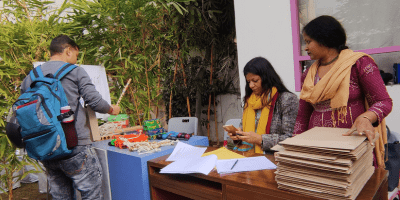
Before the Summit, I was unfamiliar with the role of dance movement therapy as a psycho-therapeutic healing practice. Even though it is commonly known that dancing releases mood-enhancing hormones in humans, I was curious to understand how DMT was different in terms of providing subsistence to trauma victims and survivors of violence in our communities.
While I was quite thrilled to avail an opportunity to experience DMT through an experiential workshop at the Summit, I was also mindful not to participate in the workshop with the possibly unfair expectation to fully imbibe the therapeutic benefits of dance movement therapy. Considering DMT is a therapy, it might need longer duration support and intervention, than joining in one hour and a half long session. Having personally experienced the de-stressing effect of many dance forms in the past despite having two left feet, I was looking forward to experiencing DMT first hand.
During the workshop, free flowing movements that came naturally to each one of us were encouraged, the underlying thought being that DMT is a safe space where in every individual is free to express themselves in the way they want. In line with this tenet, an unfamiliar yet intriguing section of the workshop encouraged each participant to imagine their physical body as a paint brush and to use their limbs and torso to paint a limitless, imaginary canvas. Shifting my mental lens to think of my physical form as a paint-brush took some getting used to but eventually the infectious energy of the workshop cohort took over.
I admit to feeling mentally relaxed and exhilarated post-workshop but still curious to understand how DMT could potentially serve as an antidote to counteract violence in our vulnerable communities. In a country like India, society norms can be quite restrictive of womens’ movement outside the society- or family-ordained ‘safe’ physical spaces, so I felt it would have been insightful to know how the DMT practice can support individuals in freely expressing their possibly repressed agency and take better care of their holistic well-being. In retrospect, I think hearing narratives from DMT practitioners who use DMT as a tool to navigate everyday threats to their physical and mental well-being, would have been of immense value in understanding the practice better.
It is entirely possible that such narratives may have already been shared in the past Summit editions, but as a first-time participant, I missed the absence of such narratives. I did get to interact with a couple of DMT practitioners who mentioned that the practice helps them cope with everyday stress and shift the lens on how they view their lives.
[mk_padding_divider size=”20″]
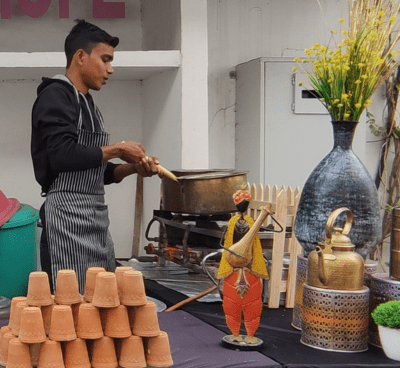
One of the key learnings for me during the Summit was the reinforcement that approaches to enhance one’s well-being are quite individualized. Availing the opportunities to experience different expressive art forms at the Summit was a constant reminder that there is no one-size-fits-all approach to well-being. An art therapy that might have a profound impact on one, might fail to put a dent on another individual’s well-being.
There is also the question of lack of funding to support well-being – the proverbial elephant in the room. However, until the world decided to acknowledge the presence of the aforementioned elephant and fully awaken to the mental health crisis we are in, one of the speakers at the Summit offered a slightly simpler solution to cope, “Art therapy is expensive… a good place to start is to start noticing what art tools you have easy access to at home such as fallen leaves, spices or other readily accessible elements of nature often overlooked. Art material could be taken from elements that are part of an individual’s environment or identity.”
The two-day DMT Summit for Change feels like a great step in the right direction as such gatherings help mainstream conversations on mental well-being and facilitate the oft-forgotten human connect. Overall, the two days left me feeling happier, joyous and craving for more opportunities to rekindle the deeper human connect, that often gets overlooked in our everyday lives, but that such events help us remember.
The reigning emotion for me at the end of the two-day art-based DMT for Change Summit and 2022 The Wellbeing Summit was that of HOPE. Hope for mental well-being taking center stage at a global level, specifically in cultures that in the aftermath of the pandemic are slowly opening up to talking about mental health and well-being.


